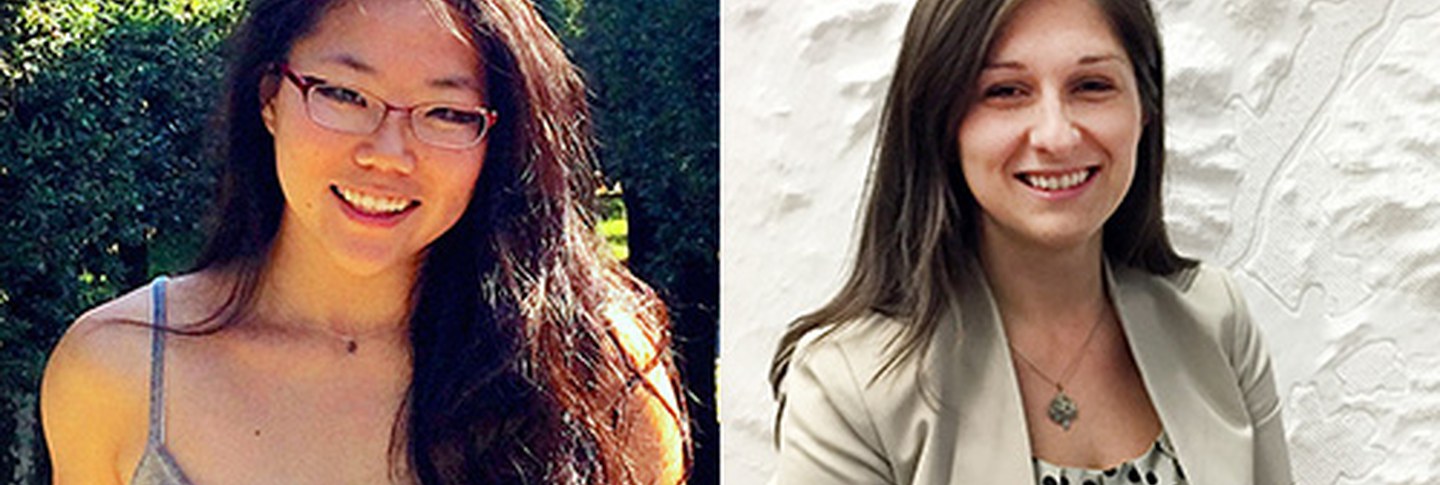The Mellon Initiative in Urban Landscape Studies and Dumbarton Oaks’ program in Garden and Landscape Studies jointly held a daylong graduate workshop on November 20, 2015, titled “Frontiers in Urban Landscape Research.” Four students from Harvard University and the University of Virginia were able to attend through support by Dumbarton Oaks’ Bliss Symposium Awards and Mellon Travel Awards. Three of them offered partial summaries of the day’s proceedings, which they were eager to share:
Angie Jo, a senior at Harvard concentrating in architectural studies, attended through the Bliss Symposium Award and wrote of the workshop:
Over the course of the day, I thought about the variety of relationships people of different places, eras, and cultures have had with their landscapes. The final conversation of the day asked how we were defining our terms—landscape, nature, place, and space are still nebulous even among those of us who are supposedly studying it. The fluidity and range of these concepts makes sense—landscape is made of the raw material of the world around us, and there are endless ways to understand, shape, and use it. In twelfth-century Marrakech, we saw locality and a sense of home; in Yaxha, political affirmation of kingly power; in Seoul’s Cheonggyecheon, a construction that may be the only “nature” most dwellers of this megacity will know. Such a variety of relationships dance around our own concept of “landscape” in a way that is only natural, and it was a great pleasure to see its range for an entire day.
Sonja Vangjeli, who is pursuing a master’s degree in landscape architecture at Harvard University’s Graduate School of Design and also attended the workshop with funding from a Bliss Symposium Award, offered summaries of two especially interesting papers from the workshop:
Margot Lystra’s presentation, “Drawing the Hybrid Freeway: Urban Design and Non/Human Relationship” explicitly addressed the essential man–nature interdependency relationship within landscape through her study of the design of freeways as hybrid natural-technological landscapes. By thinking about freeways as driving experiences of sequential expanding and contracting vistas of the landscape, designers were able to elevate these mundane infrastructures beyond mere engineered objects, making them vehicles for experiencing the vast landscapes of the United States. She referred to Ian McHarg’s and Lawrence Halprin’s approaches of urban and landscape design as examples of “hybridity between the natural, the human, and the technological.” Lystra interpreted landscape design as an “interrelational process” driven by shifts in environmental science and society, pointing to the relational quality of landscape and its reliance on culture.
Abbey Stockstill’s paper “The Mountains, the Mosque, and the Red City: Locality in Twelfth-Century Marrakech” furthered this cultural relation by presenting a very interesting example of the role of landscape in creating cultural identity through references to geography and local materials. She studied the rise of the Almohad dynasty in Morocco and attributed its success to the creation of a specific geographically rooted cultural identity, achieved through design strategies such as orienting the primary mosque toward their place of origin—the Atlas Mountains—and their widespread use of the local red sandstone and orange-red clay in the construction of the urban fabric to create the image of Marrakech as the “red city.” The creation of local cultural identity through relations to local landscape is a particularly relevant idea in an increasingly globalized and standardized world. By studying how particular cultures in history in various geographies around the world have been able to adapt to their local context by mediating nature in order to settle and cultivate land, thereby creating their specific cultural identity, and strengthening it by articulating it in their architecture and urban design, the value of local cultural specificity can be rediscovered and allowed to inform and contribute to contemporary design.
Scott Shinton, a master of landscape architecture candidate at the University of Virginia and recipient of a Mellon Travel Award, offered another example of a paper presented at the workshop, as well as a sense of its wide topical range:
In papers presented from students in PhD programs in art history, architecture, landscape architecture, and the built environment, among others, it was clear that emerging scholars are focused on topics that engage landscape in a multidisciplinary, holistic fashion. Molly Briggs, for example, questioned the validity of contemporary and historic cartographic practices in her presentation, “Beyond the Path: Assessing the Transporting Capacity of Urban Landscapes with Dynamic Isovist Imaging.” By providing a historical framework for understanding diverse modes of mapping, and in turn presenting a new way of mapping, Briggs provided a new way of understanding and experiencing space.
Aside from the presentations themselves, the feedback from current scholars, such as Thaisa Way and John Beardsley, was particularly helpful in terms of situating the students’ projects within a wider range of topics germane to the field. As a master of landscape architecture candidate interested in pursuing a PhD, I was enlightened not only in terms of the content presented at the workshop, but more importantly the way in which the scholars present approached the work and pushed it into a new realm.

